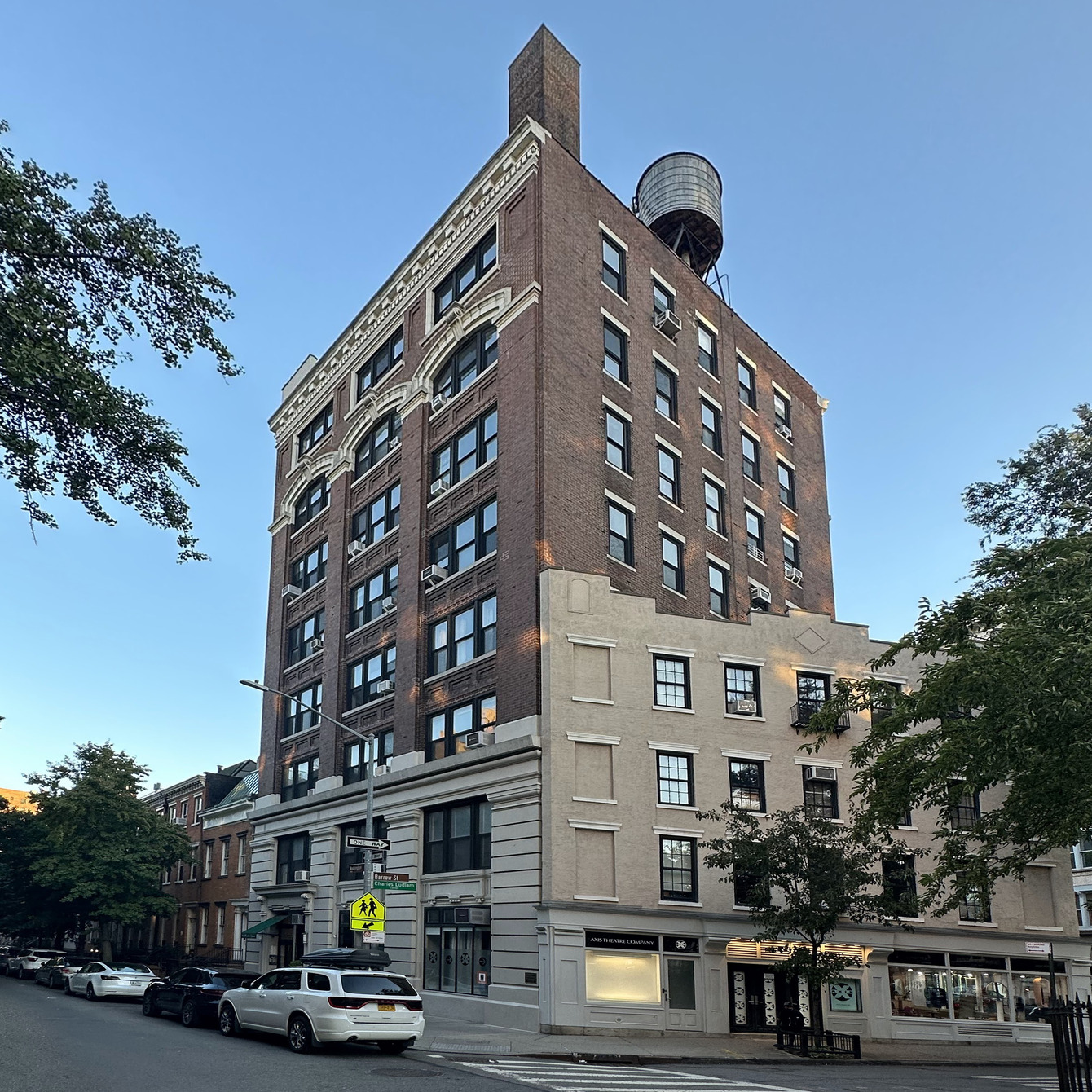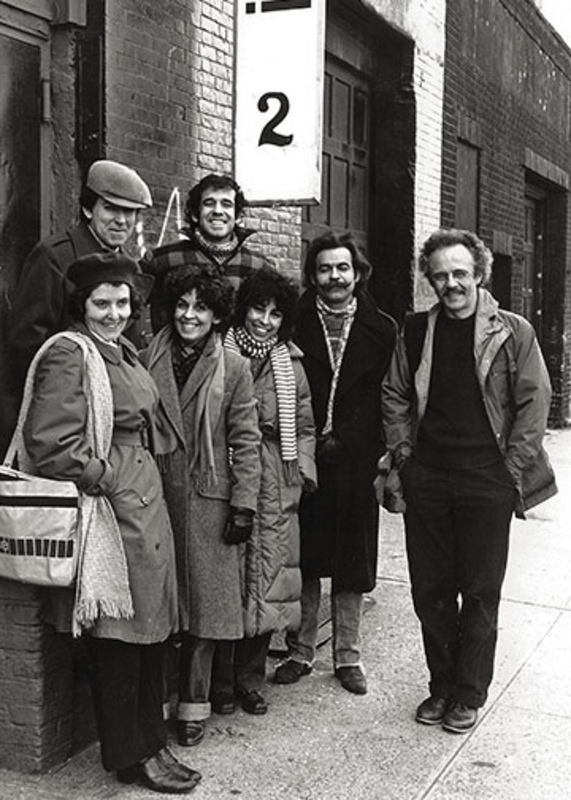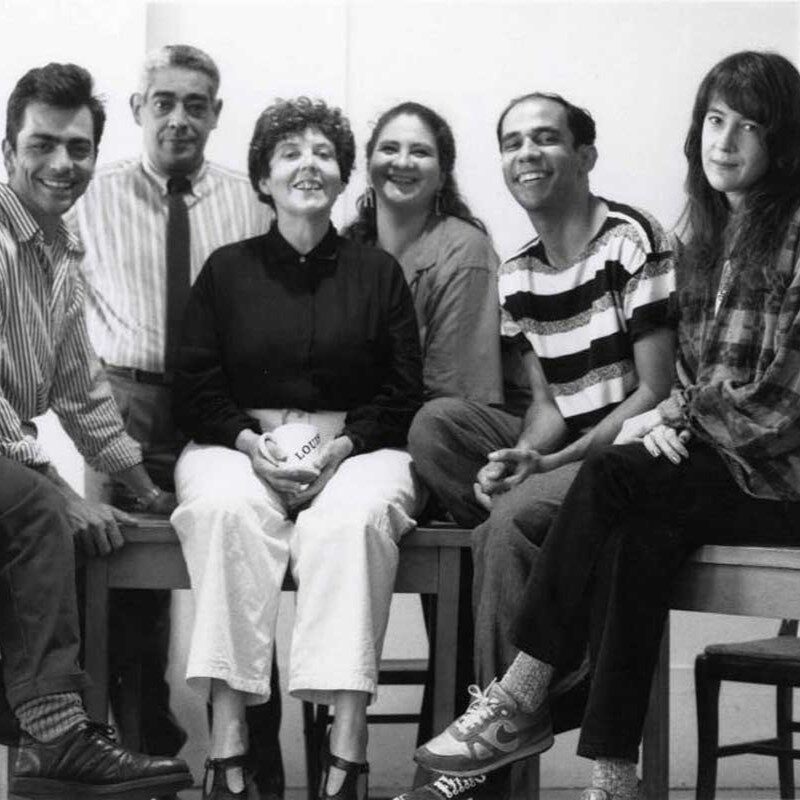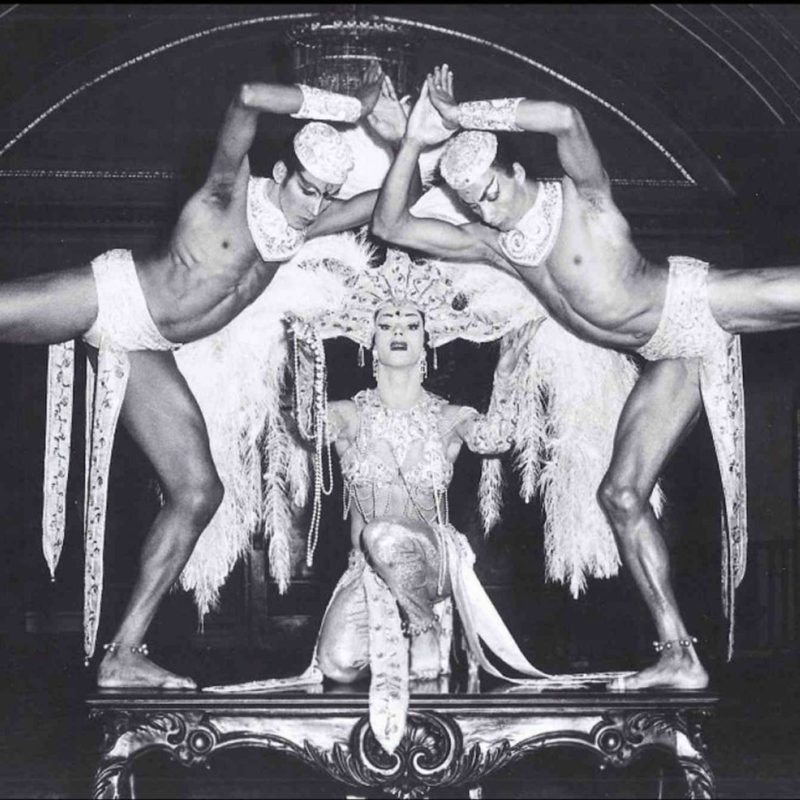
María Irene Fornés Residence
overview
An influential figure in the Off-Broadway and Off-Off-Broadway movements, Cuban-born playwright and director María Irene Fornés had a 40-year career in the theater and was celebrated for her experimental use of visuals, music, and the stage in her work.
Fornés lived in an apartment on the fourth floor of this Greenwich Village building from the early 1960s until 2005.
History
Born in Havana, Cuba, María Irene Fornés (1930-2018), who went by Irene, was an iconic playwright and director of the Off-Broadway and Off-Off-Broadway movements. She wrote over 50 plays – produced in the United States and abroad – in 40 years, amassing nine Obie awards and being named a finalist for the Pulitzer Prize in Drama in 1990.
After her father’s premature death in 1945, Fornés immigrated to the United States with her mother and sister. They first lived in the South Bronx and then at 142 West 62nd Street in Manhattan’s San Juan Hill before that neighborhood was demolished for Lincoln Center and the Fordham University campus. While never completing her elementary education, she trained and studied with renowned abstract expressionist painter Hans Hofmann at his studio in New York. From 1954 to 1957, she traveled through Europe and had a brief relationship with writer and model Harriet Sohmers Zwerling.
Returning to New York in the late 1950s, Fornés began a relationship with writer Susan Sontag in 1959, which lasted until 1963. According to Sontag’s diaries, Fornés split her time between her apartment at 1 Sheridan Square and Sontag’s at 350 West End Avenue. This relationship influenced Fornés’s professional career as a playwright. Fornés said that, in the spring of 1961, as part of an attempt to help Sontag deal with writer’s block, she began writing a short story by using certain words taken from a cookbook as inspiration. This technique remained with her through the rest of her career:
I created a game where I wrote things in different cards, and then I shuffled them, and then I picked them at random, and whatever the cards said, then I would go off… off in that direction. And I wrote it in two or three days.
Fornés, who did not have formal theater training, wrote her first play in Spanish, La viuda (Spanish for “The Widow,” based on family letters), in 1961 for a playwriting contest in Cuba. It then became her New York City debut when it premiered, in Spanish, the same year. Later on, Fornés joined the Actors’ Studio Playwright Unit and learned acting techniques from teachers Lee Strasberg and Gene Frankel. Fornés’s first English-language play, Tango Palace (initially named There, You Died!), opened in California on November 29, 1963. As more plays followed, the playwright used her 1950s visual arts training on the illusions of space and movement to keep pushing the boundaries between theater and music.
For her first New York City production in English, she collaborated with theater composer Al Carmines on the 1965 production of Promenade at the Judson Poets Theater — her first Obie award-winning musical and the production with the longest run of her career. For her 1977 seminal play Fefu and Her Friends, Fornés experimented with spatial interactions, having various scenes running simultaneously, with the audience divided into groups and moving through the different scenarios. While her plays occasionally explored strong female characters and diverse cultural narratives, Fornés commonly disregarded labeling herself and her plays.
Being gay is not like being of another species. If you’re gay, you’re a person. What interests me is the mental and organic life of an individual. I’m writing about how people deal with things as an individual, not as a member of a type.
Besides her achievements as a playwright and director, Fornés is recognized by many Latino artists as a longstanding teacher. In 1980, Fornés founded, taught, and, from 1981 to 1992, directed the Hispanic Playwrights-in-Residence Laboratory of the International Arts Relations (INTAR). She trained over 40 award-winning and widely recognized playwrights in the program, such as Migdalia Cruz, Caridad Svich, Cherríe Moraga, Anne García-Romero, Pulitzer Prize-winner Nilo Cruz, Ana María Simo, Luis Alfaro, and Víctor Fragoso. Within the residency program, Fornés also wrote plays (some of which she directed) and directed Spanish and Latin American classics and plays written by her students.
Her last play was Letters from Cuba (2000), which was based on letters from her brother Rafael, living in Cuba, to her and their sister and mother. Fornés was diagnosed with Alzheimer’s in 2005, at which time she was moved to a nursing home in upstate New York. A petition was created to transfer her to a facility in New York City so that her theater admirers could visit her; in 2013, she was moved to Amsterdam House, where she had a view from her window of the Cathedral of St. John the Divine across the street. Journalist and filmmaker Michelle Memran recorded her final years and published the documentary The Rest I Make Up (2018).
Entry by Andrés Santana-Miranda, project consultant (July 2024)
NOTE: Names above in bold indicate LGBT people.
Building Information
- Architect or Builder: Harry Mulliken and Edgar Moeller
- Year Built: 1902-1903
Sources
Allan Kozinn, “Theater World Friends Bring Ailing Playwright Closer To Home,” The New York Times, February 6, 2013, bit.ly/3XZjNV6.
Anne García-Romero, “María Irene Fornés,” in Fifty Key Figures in Latinx and Latin American Theatre, ed. Paola S. Hernández and Analola Santana (Oxon: Routledge, 2022).
Anne García-Romero, The Fornes Frame: Contemporary Latina Playwrights and the Legacy of Maria Irene Fornes (Tucson: University of Arizona Press, 2016).
Araceli González Crespán, “From La viuda to Letters from Cuba: Family Correspondence in María Irene Fornés’ Theater,” Revista de Estudios Norteamericanos 27 (December 2023): 83-98.
Caridad Svich, “The Legacy of Maria Irene Fornes: A Collection of Impressions and Exercises,” PAJ: A Journal of Performance and Art 31, no. 3 (September 2009): 1-32.
Charles McNulty, “Obie-winning playwright María Irene Fornés, a transformative off-Broadway figure, dies at 88,” Los Angeles Times, October 31, 2018.
Don Shewey, “Her championship season,” The Advocate, November 9, 1999. [source of second pull quote].
Elisa de la Roche, ¡Teatro Hispano! Three Major New York Companies (New York & London: Garland Publishing, 1995).
Gwendolyn Alker, “Fornesian Animality: María Irene Fornés’s Challenge to a Politics of Identity,” Journal of Dramatic Theory and Criticism 35, no. 1 (Fall 2020).
Gwendolyn Alker, “María Irene Fornés,” in Fifty Key Figures in Queer US Theatre, ed. Jimmy A. Noriega and Jordan Schildcrout (Oxon: Routledge, 2023).
Lillian Manzor, Marginality Beyond Return: US Cuban Performances in the 1980s and 1990s (New York: Routledge, 2023).
María Irene Fornés Papers, Fales Library & Special Collections, New York University, New York, NY.
Michelle Memran, The Rest I Make Up (New York: Women Make Movies, 2018). [source of first pull quote].
Scott T. Cummings, Maria Irene Fornes (Oxon: Routledge, 2013).
Susan Sontag, Reborn: Journals and Notebooks, 1947-1963, ed. David Rieff (New York: Farrar Straus Giroux, 2008).
Do you have more information about this site?
This project is enriched by your participation! Do you have your own images of this site? Or a story to share? Would you like to suggest a different historic site?







